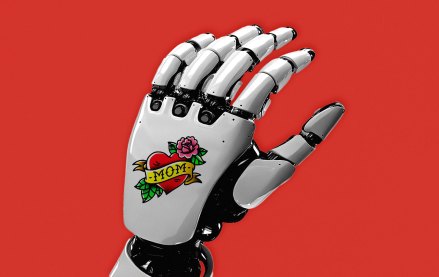Connect with execs from The New York Times, TIME, Dotdash Meredith and many more
On the road to voice payments, Google and Amazon pull ahead of Apple


Google just scrapped its Hands Free pilot, a retail payments program it began testing almost a year ago that allowed people to use facial recognition technology to pay for items in-store. All they had to do was say “I’ll pay with Google.”
The road to mobile payment is riddled with the bones of past failures. Google previously stumbled with Google Wallet in 2011, the first attempt at a mobile wallet for consumers that never really took off — and was overshadowed by Apple Pay, which launched months later.
But now Google has a leg up in voice, which is probably the next shift in consumer behavior, and as a result, payments. The same is true for Amazon. Google’s Hands Free facial recognition experiment may not have caught on, but the popularity of its Home Assistant, as well as Amazon’s Alexa, is rising rapidly. Echo sales jumped 400 percent from last year, according to VoiceLabs, and both Google Home and Alexa grew their third-party developer bases more than 1500 percent.
Meanwhile, Apple is missing the voice-first boat, which is odd considering that Apple Pay, a fingerprint-enabled mobile payment service, took an early lead in the mobile payments race after Google Wallet’s flameout.
But fingerprint tech is different from voice. And even though Apple’s Siri debuted well ahead of Alexa and Google Home, in differs from them in the types of information users feel comfortable sharing with her and what they can share with Alexa or Google Home.
Here’s how the three biggest players in voice currently stand against each other in regards to voice payments:
Alexa
This week Starbucks — itself a payments pioneer disguised as a caffeine vendor — launched a beta version of its voice ordering function for iOS and Alexa users. About 1,000 users in the U.S. are testing the service. People who bank with Capital One can ask Alexa for information about their banking activity. Alexa has the greater information sharing and reading capability, for now, than its competitors.
There is an increasing number of service providers bringing Alexa integrations to enable commerce through voice. Currently, it adds a level of convenience to small purchases, like a Starbucks coffee or an Uber ride.
“I don’t think the day is on the horizon where a consumer is standing in their living room saying, ‘I want to order a 42-inch TV,’” said Michelle Evans, head of digital consumer research at Euromonitor. “I think it’ll be driven around different products or services where convenience is a factor,” like food ordering, or ride sharing services.
Google Home
Brian Roemmele, a researcher and analyst and founder of PayFinders.com, predicts that in the next two years adoption of digital assistance will accelerate as quickly if not more as the original iPhone did in its early days and smaller uses will begin to take off, like ordering food.
“We had three voice-first Super Bowl ads,” he pointed out. “One from Google and two for Alexa. People say mainstreaming is about 10 years away, I’m saying it already happened.”
It’s not clear what Google’s next move is. Now that the Hands Free pilot is over it plans on “bringing the best of the Hands Free technology to a wider audience,” it wrote in an FAQ this week. In the same week, Alphabet, Google’s parent company, warned investors in its annual report of increasing competition from “digital assistant providers, such as Apple, Amazon, Facebook and Microsoft.”
Furthermore, developers last month dug into the code that makes up the latest version of the Google Home Assistant and found some lines saying it would soon allow users to make payments directly through Google Home. Neither Google nor Amazon responded to requests for comment.
Siri
Developers have built a voice-first peer-to-peer payment capability into the latest iPhone operating system, with Square Cash and U.K. challenger bank Monzo. The next update will include voice-activated bill pay functionality, an Apple spokesperson confirmed. But because Siri requires the person’s fingerprint to authenticate and send the payment, it still feels like more of a mobile payment than a true voice payment. For example, someone might say, “Hey Siri, send John $10 using cash,” Siri would go into the Cash app to set up the payment, but then ultimately require TouchID verification to send it.
Apple’s best efforts in voice have been Siri and its new AirPods, wireless headphones made for better listening experiences and interactions with Siri. These allow people to exchange much more personal information, things customers are most likely uncomfortable disclosing to a digital assistant like Alexa or Google Home because of who might be listening in on that information, said PayFinders’ Roemmele.
Because customers tend to communicate more generalized information with Alexa and Google, Roemmele added, the two companies will need to fine tune its voice recognition and authentication capabilities to ensure when customers share private information they never feed it back when a third party is in the room.
Nevertheless, Siri as a digital assistant lags behind them. Customers feel the difference when they ask Siri particularly complex questions and she often directs them to web searches requiring they do further reading and research, instead of replying with a complete answer the way Alexa or Google would.
“Apple is missing part of the voice-first revolution because they see it as an upending to the existing operating system,” Roemmele said. “They don’t see it as a modality in and of itself and because of that they box themselves out of it.”
More in Marketing

Generative AI sparks brand safety concerns marketers know all too well
Despite concerns around brand misuse and IP, most marketers are sticking to traditional strategies.

‘Production is a big topic right now’: With AI moving beyond media, Publicis turns toward creative
The holdco is positioning AI as core infrastructure for ad production not just media buys.

Instagram offers a new guide to advertisers to convince them to try out its creator marketplace
The 26-page document aims to make the whole process quick and painless.





